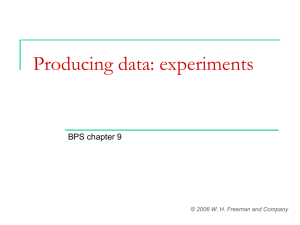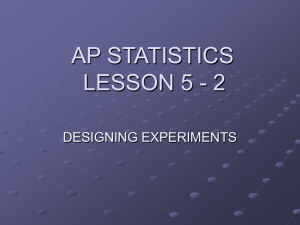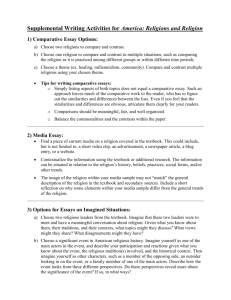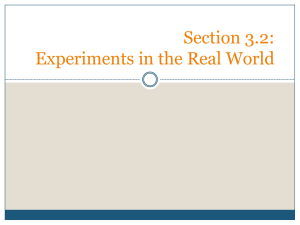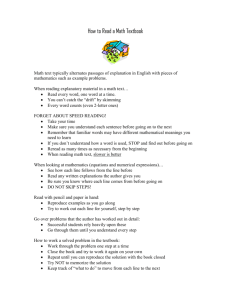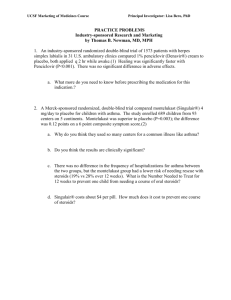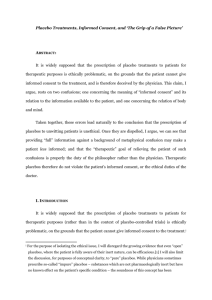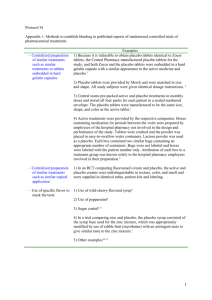Randomized Comparative Experiments
advertisement
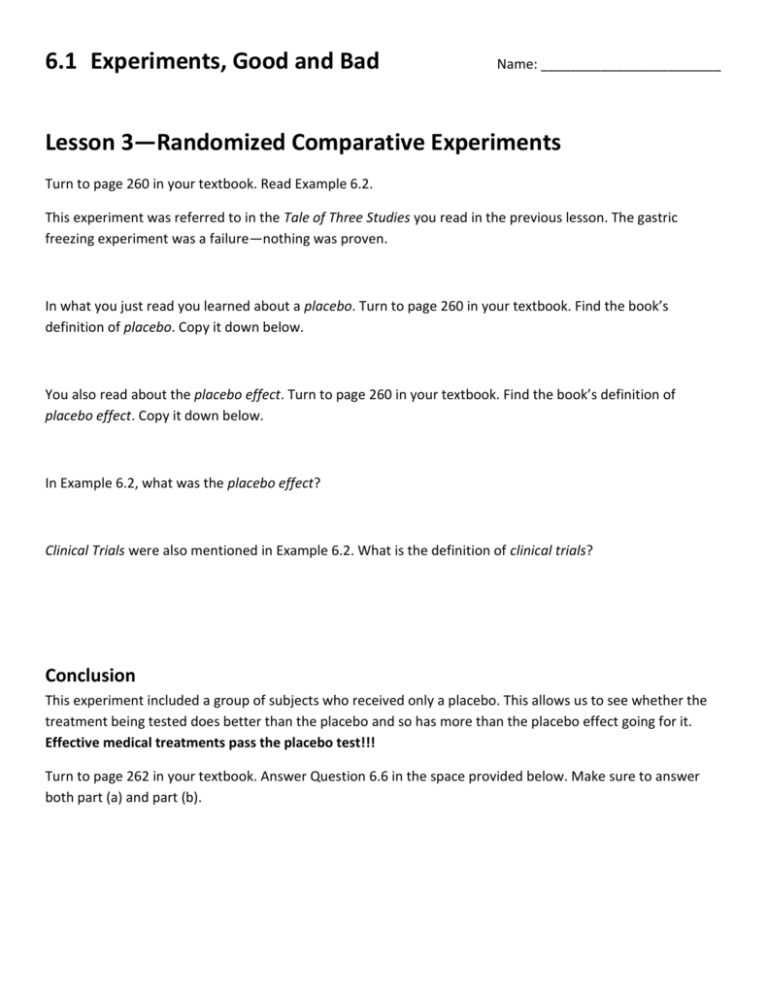
6.1 Experiments, Good and Bad Name: ________________________ Lesson 3—Randomized Comparative Experiments Turn to page 260 in your textbook. Read Example 6.2. This experiment was referred to in the Tale of Three Studies you read in the previous lesson. The gastric freezing experiment was a failure—nothing was proven. In what you just read you learned about a placebo. Turn to page 260 in your textbook. Find the book’s definition of placebo. Copy it down below. You also read about the placebo effect. Turn to page 260 in your textbook. Find the book’s definition of placebo effect. Copy it down below. In Example 6.2, what was the placebo effect? Clinical Trials were also mentioned in Example 6.2. What is the definition of clinical trials? Conclusion This experiment included a group of subjects who received only a placebo. This allows us to see whether the treatment being tested does better than the placebo and so has more than the placebo effect going for it. Effective medical treatments pass the placebo test!!! Turn to page 262 in your textbook. Answer Question 6.6 in the space provided below. Make sure to answer both part (a) and part (b). Randomized Comparative Experiments The first goal in designing an experiment is to ensure that it will show us the effect of the explanatory variables on the response variables. Confounding often prevents one-track experiments from doing this. The remedy is to compare two or more treatments. Turn to page 262 in your textbook and read Example 6.3—Sickle-cell Anemia. Draw Figure 6.2 in the space below. Figure 6.2 illustrates the simplest randomized comparative experiment. A randomized comparative experiment compares 2 or more treatments. The simplest is 2 like Example 6.3. The most essential information about the design is random assignment; one group for each treatment; the number of subjects in each group; what treatment each group gets; and the response variable we compare. Random Assignment: How could you randomly assign the 299 subjects to the two groups? _______________ One Group for each Treatment: What is the treatment? Are there two treatments? _____________________ The number of subjects in each group: Is the number of subjects in each group the same? Do you think that is a problem? Why or why not? __________________________________________________________________ What treatment each group gets: The treatment each group was given was also chosen randomly. Like flipping a coin. Response variable: What was the response variable that was compared? _________________________ The placebo group in Example 6.3 is called a control group. What do you think the definition of a control group is? It is the same as the scientific definition of control group. Read the last paragraph on pg. 263 to get a full understanding of what a control group is. Turn to pg. 264 in your textbook and read Example 6.4. Turn to page 265 in your textbook. At the bottom of the page you will see a blue box with the basic principles of statistical design of experiments. Write all three below. 1. 2. 3. Assessment Turn to page 266 in your textbook. Answer the following questions in the space provided below. Make sure to answer every part of each question. 6.7 6.8 The presence of chance variation requires us to look more closely at the logic of randomized comparative experiments. There will be some differences even if both treatments are the same because there will always be some differences among the individuals who are the subjects. Even though randomization eliminates systematic differences between the groups, there will still be chance differences. We should insist on a difference in the responses so large that it is unlikely to happen just because of chance variation. This is statistical significance. Turn to pg. 267 in your textbook and copy the definition of statistical significance below. Read the two paragraphs underneath the definition of statistically significant. Get a feel for what statistically significant means. We will learn in Ch. 10 how to test for statistically significant. For now, just ask yourself, “Is it unlikely to happen by chance?” Assessment Turn to page 269-270 in your textbook. Answer the following question in the space provided below. Make sure to answer every part of each question. 6.13 Please turn to pg. 270 and complete Application 6.1. This is a cumulative review of Section 6.1 which includes Lessons 1, 2, and 3. Answer all 4 questions fully and completely in the space provided below.

